How To Stop Windows 10 From Using My Mobile Data When On Metered Connection?
- Addressing your Windows 10 Data Usage Troubles
- Method 1: Set Your Connection as Metered
- Method 2: Disable Background Apps
- Method 3: Defer/Postpone Windows Updates
- Method 4: Disable automatic Delivery Optimisation
- Method 5: Disable Microsoft Store app updates
- Method 6: Disable PC syncing
- Method 7: Disable Live Tiles
- Method 8: Save Data on Web Browsing
- Summary: Stop Windows 10 from using my mobile data when on metered connection
- Conclusion
If you have a Windows 10 laptop, tablet or mobile phone connected to WiFi at home, you'll be pleased to learn that Microsoft's latest operating system has a setting that will prevent it from using your mobile data when on a metered connection - this is excellent news if your carrier charges you for going over your data limit. Windows 10 is know to have an issue where it will automatically use a mobile network for data when connected to some WiFi networks - but how to stop Windows 10 using my mobile data when on metered connection?
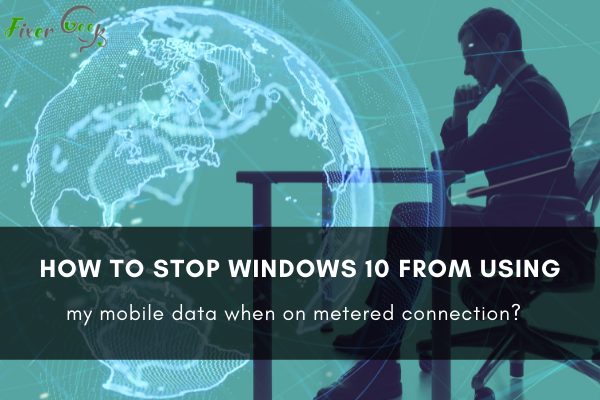
Released in 2015, Windows 10 belongs to a series of OS developed by tech giant Microsoft. The software received great feedback upon its initial public release. And to guarantee the optimal User Experience (UX) for everyone, Microsoft deliberately designed Windows 10 to download updates automatically, even without the user’s permission.
This is one of the reasons why Windows 10 is regarded as the most voracious data-eater among all versions of Windows. But, what makes Windows 10 consume so much data? And are there any ways to help mitigate this insatiable appetite for Internet data?
Read more to know the methods that we recommend to help prevent Windows 10 from eating up your entire monthly data bundle.
Addressing your Windows 10 Data Usage Troubles
Fortunately, there are many things you can tweak to prevent Windows 10 from consuming too much from your allocated data bundle. Here are some of the proven hacks to help you address this Windows 10 data dilemma:
Method 1: Set Your Connection as Metered
As mentioned earlier, Windows 10 regularly checks and downloads updates without permission, consuming both upload and download bandwidths. This feature is convenient if you don’t have a data cap, but it’s the other way around for most users who rely on limited data allocations. Follow the instructions below to set your Wi-Fi-connection as metered:
- Go to Start.
- Click Settings, then proceed to Network & Internet
- Tap on Wi-Fi and click the “name of your Internet connection.”
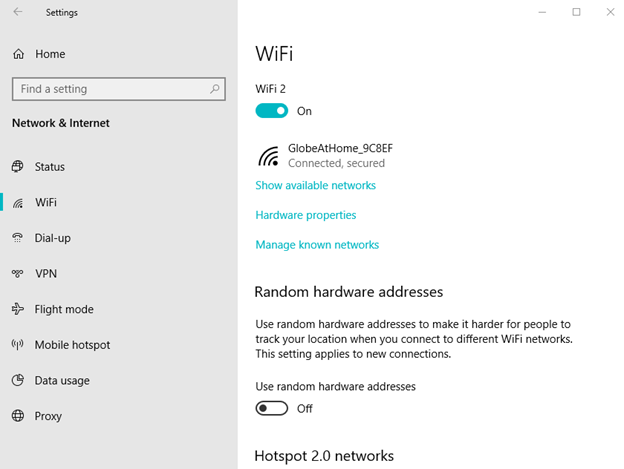
- Lastly, toggle on Set as metered connection.
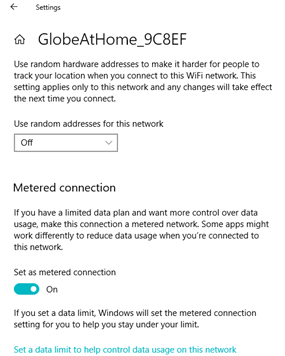
Method 2: Disable Background Apps
By default, Windows 10 allows some apps – particularly those connected with Microsoft. These apps consume a lot of data. To turn off those that you think aren’t helpful to you, follow these steps:
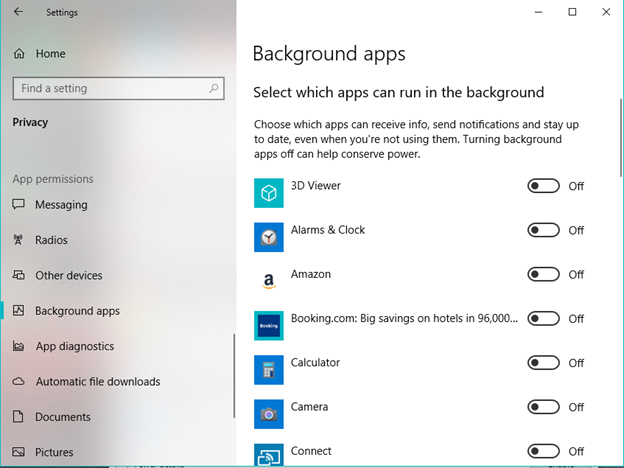
- Go to Settings.
- Click on Privacy, then click on Background apps.
- Toggle off apps that you don’t necessarily need.
Method 3: Defer/Postpone Windows Updates
One option of Windows 10 allows the users to postpone or defer the download of new features. Depending on the users’ preference, this can even last for months. To defer updates, follow these steps:
- Go to Settings.
- Click on Update & Security, then tap Windows Update.
- Click on Advanced options and scroll down.
- On the Pause updates, select what date you want to resume downloading of updates.
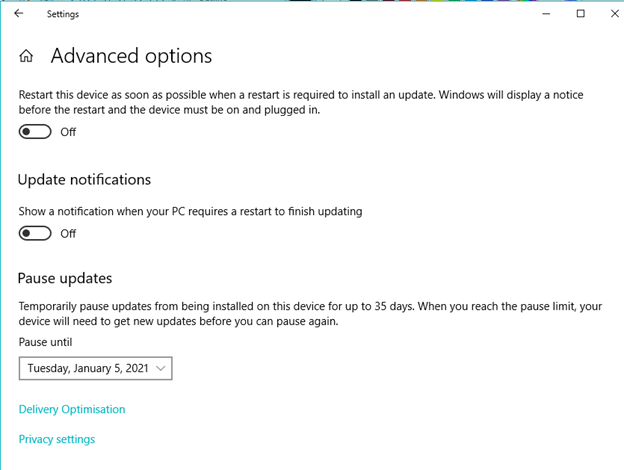
Method 4: Disable automatic Delivery Optimisation
By default, Windows 10 automatically uses your data allocation to upload Windows and other updates on your local area network. To prevent this from happening, follow these steps:
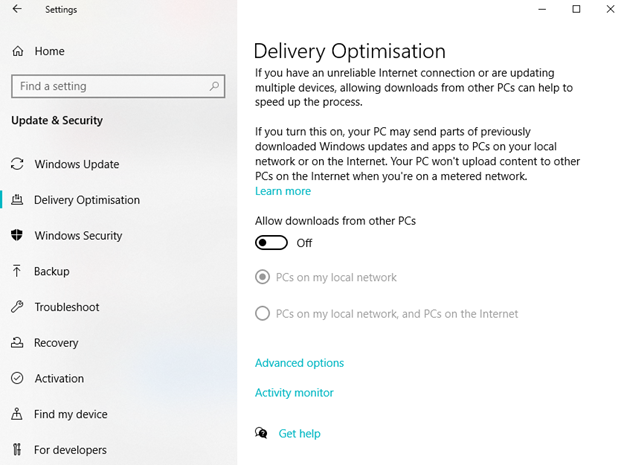
- Go to Settings, then click on Update & Security.
- Click on Delivery Optimisation.
- Either way, you can disable the option entirely or set it to “PCs on my local network.”
Method 5: Disable Microsoft Store app updates
Sometimes, Windows 10 automatically installs app updates and fetches data for live tiles. To disable this feature, simply follow these steps:
- Open Microsoft Store.
- Tap on the three dots (…) located at the upper-right of the store app.
- Click on Settings and toggle off the “Update apps automatically.”
Method 6: Disable PC syncing
Honestly, this Windows 10 feature is quite convenient. However, you won’t definitely need to run syncing all the time. To turn this feature off, follow these steps:
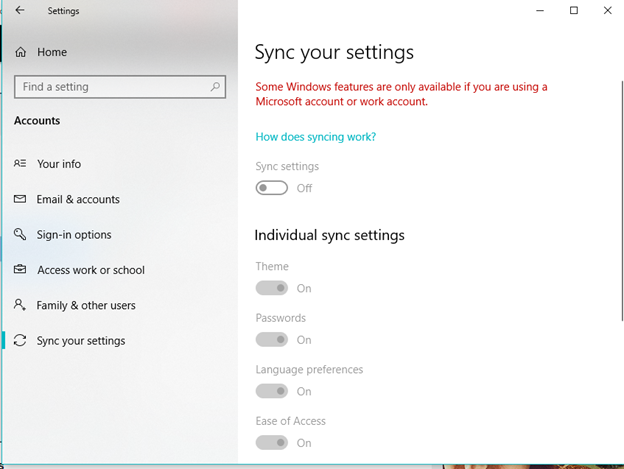
- Go to Settings, then click Accounts.
- Tap on Sync your settings, then toggle off the Sync settings.
Method 7: Disable Live Tiles
Though not that much, the live tiles on your Start menu also nibble a bit of Internet data. Regardless, here’s how to prevent a tile from fetching new data:
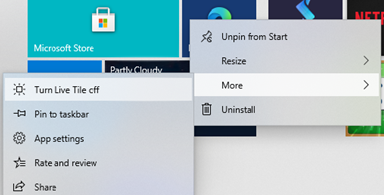
- On the Start menu, right-click or long-press a tile.
- A pop-up menu will appear and click on More.
- Select Turn Live Tile Off.
Method 8: Save Data on Web Browsing
Most users don’t know that their web browser constitutes a lot of their data usage. To mitigate this issue, select a web browser that has an integral compressing feature. By doing so, the browser will route the data via a number of servers where it’s compressed before sent back to you.
Just install Google’s official Data Saver extension if you’re a fan of using Google Chrome. The opera browser also offers “Turbo mode,” a feature that boasts the same functionality.
Summary: Stop Windows 10 from using my mobile data when on metered connection
- From your Start menu, go to Settings > Network & Internet.
- Select Wi-Fi.
- Scroll down and under Related settings, select Change advanced sharing settings.
- In the Advanced settings pane, scroll down to the section titled Metered connections.
- Turn all of the following options to On or Off according to your liking: Set as metered connection, Notify for download and upload over metered connections, and Background apps over metered connections.
- Restart your computer and your new connection will be saved.
Conclusion
Depending on your situation, you can select one or even try all the listed methods in this guide to help abate the data usage of your PC’s Windows 10. Nevertheless, while in a bid to cut down your PC’s data consumption, it’s best to update your security features constantly. Though this might undoubtedly take a chunk on your data allocation, it’s still better to be prepared than becoming sorry about data and security breach later.